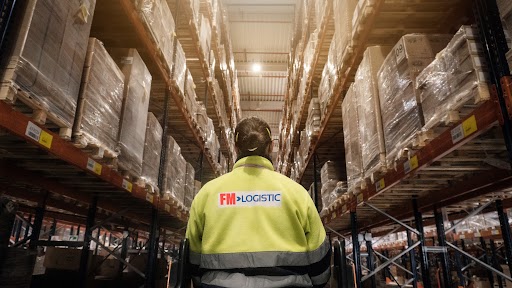On January 28, 2022
Trends in Logistics and Transport for 2022
According to data from ICEX (Spanish Institute for Foreign Trade), the transport and logistics sector represents 7.9% of Spanish GDP, which rises to 10%, if we include logistics…

On January 28, 2022
According to data from ICEX (Spanish Institute for Foreign Trade), the transport and logistics sector represents 7.9% of Spanish GDP, which rises to 10%, if we include logistics…
According to data from ICEX (Spanish Institute for Foreign Trade), the transport and logistics sector represents 7.9% of Spanish GDP, which rises to 10%, if we include logistics activities carried out by industrial, commercial and service companies. The current turnover of this sector reaches 111,000 million euros, generates almost one million jobs, and includes a high business concentration with around 197,000 companies linked to the sector.
According to data collected by Foro de Logística, the autonomous communities, with the highest logistics performance are Catalonia, Madrid, Valencia and Andalusia.

Since the outbreak of the COVID-19 pandemic, the logistics sector has been defined as a sector of prime necessity in our country. That is why one of the most important words in 2022 will be “transportation”. The trends in the Logistics and Transportation sector for 2022 are:
New regulations in the last mile. Institutions, governments and private companies will continue to focus on creating a general regulation throughout the country. Currently, the same logistics company has to deal with different legislation in Barcelona, Madrid or Soria, which hinders efficiency and proper fleet management. “It cannot be that each city reinvents the rules of distribution. There must be a general framework that companies can hold on to,” explains Pablo Gómez, general manager of FM Logistic Ibérica.
Sustainability. Sustainability is going to be an indispensable issue for all companies. It is becoming increasingly important, both for the general public and for customers, to have a decarbonization-oriented activity. Pollution is a matter of general awareness, so it is going to be a decisive aspect in logistics. It should also be noted that more and more cities are opting to include restrictions on polluting vehicles.
Hydrogen is positioned as a good alternative for the transition to green fuels, but “it remains to be seen whether hydrogen will be an energy carrier in transport. How European funds are distributed will be decisive for our energy transition,” argues Pablo Gómez.

Investment in innovation and technology. The transportation and logistics sector is very old-fashioned, and in many companies, the processes are still manual, and this cannot be sustained over time. Companies will have to reinvent themselves with disruptive ideas and thus differentiate themselves from their competitors.
Customers and even carriers demand innovation and continuous improvement. In 2022, it will be essential for all the companies in the sector to focus on innovation. Logistics companies are pursuing optimization of their routes as one of their main objectives.
Control of the sector’s internal crises. The price of fuel has been increasing over time, and the price of electricity has followed the same trend. Road tolls are expected to be extended in the coming years and the road traffic is increasing.
Another issue to take into account is the generational crisis of drivers. The average age of this profile is 55 years old and the younger population does not find this position attractive. It is necessary to value this profile, and improve their working conditions and family reconciliation. Hence, it is a fundamental pillar in this sector.
One of the challenges for companies will be to see if it is possible to pass on the increased cost to customers, and to see if the threat of strike action in December last year translates into concrete issues in the market.
In the same vein, it will be necessary to retain talent in the traffic and commercial departments, since in this sector they have a heavy workload, and there is a considerable labor abandonment.
Improving processes while maintaining margins. With rising costs, one of the main battles is to improve processes and be efficient, while maintaining profit margins. This will be a defining issue for many companies.
Intermodal business model. As we discussed earlier, the conventional business has to change. It is no longer viable with the economic and sociological changes. Road transport is becoming less profitable, more dangerous for drivers’ safety and Spanish roads are increasingly congested. The trend this year – as is always pointed out but never takes off – is towards rail transport, which on the other hand is also more sustainable.
There are many challenges ahead in 2022, that the logistics sector will have to face due to these trends. All this is possible, and one of the things that is most needed is to know how to manage uncertainty on the part of all the actors involved, because it is the sector of fashion and of the future. Without logistics, no sector of activity could develop normally.
How can we help you ?
What are you looking for?
Fill in the form